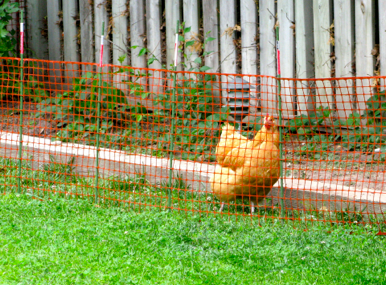
Urban Pasture Management
I finally figured out a cost-effective way to keep the girls exactly where I want them to be. For a total cost of about $50, I am using portable fencing and stakes from Home Depot. No ties necessary – just weave the stakes through the fencing material and cut to size!
The plan is to create a mini pasture management system similar to what would be used on a farm. The chickens are temporarily segregated to one area, while the grass is over-seeded and recovers in the other area. The fence is only 3 feet high and they don’t even try to get out.
When I switch them to a new area, they can’t believe their good fortune when they see the bugs they haven’t been able to get their beaks on yet.
